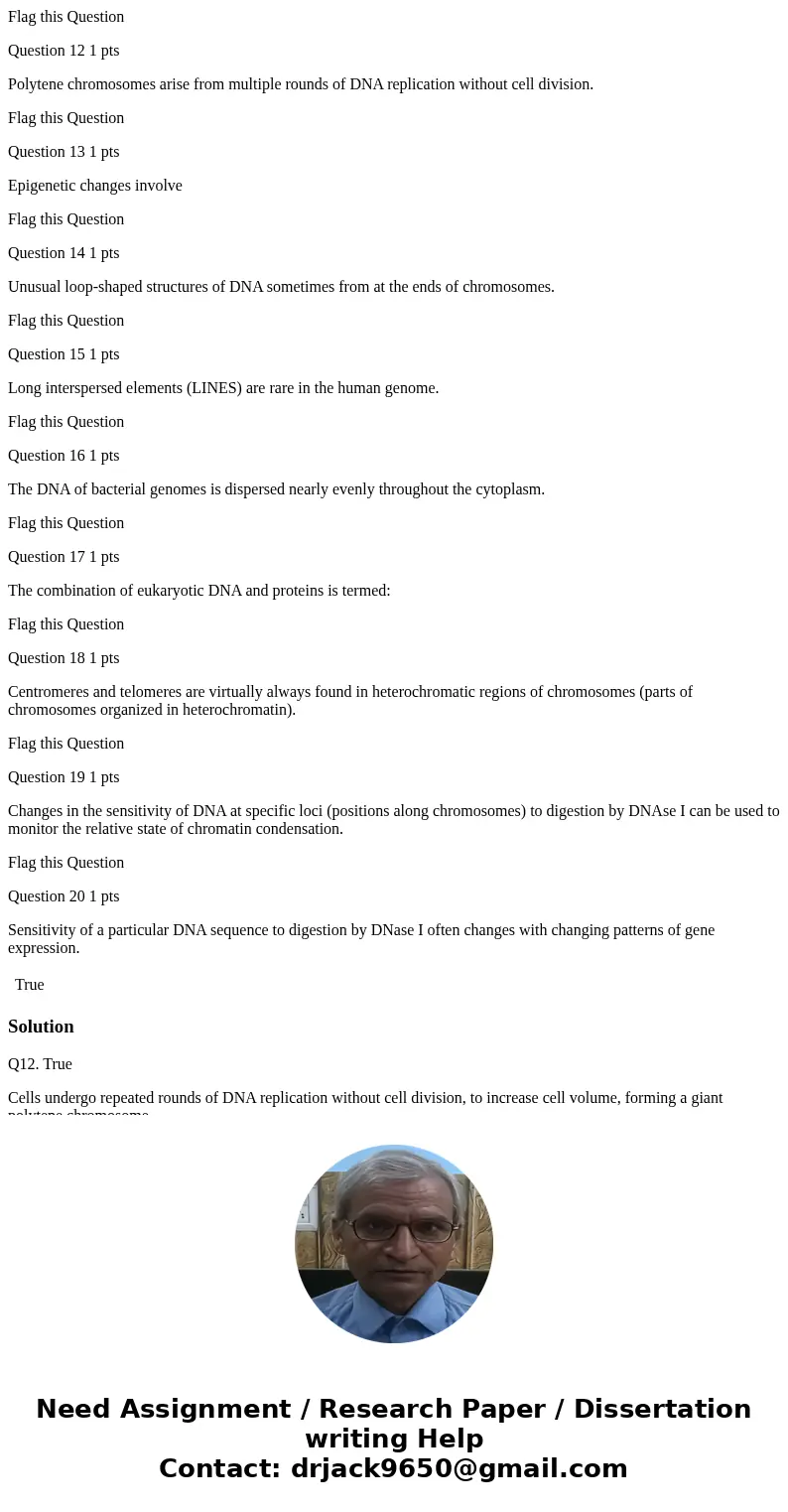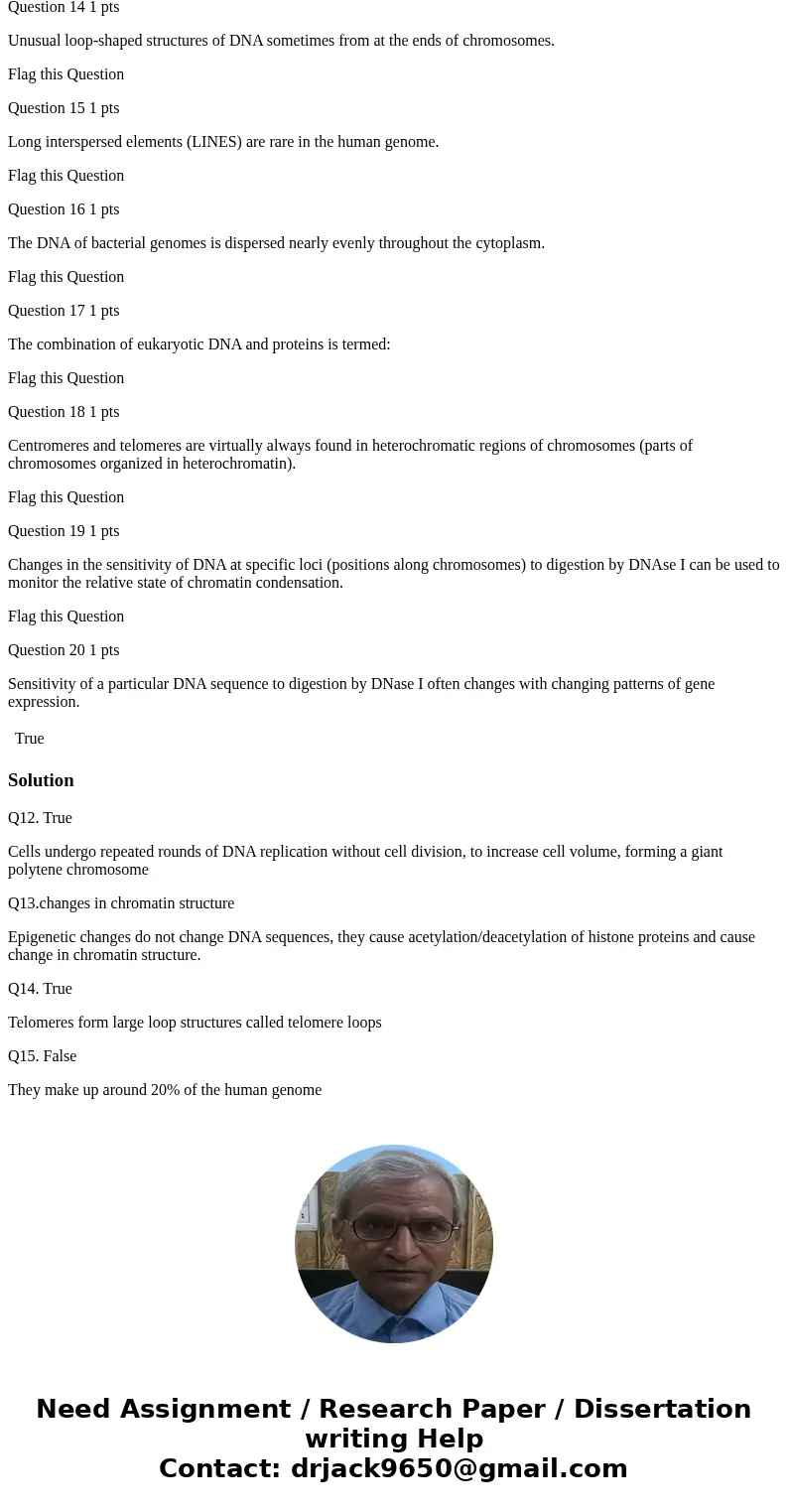Flag this Question Question 12 1 pts Polytene chromosomes ar
Flag this Question
Question 12 1 pts
Polytene chromosomes arise from multiple rounds of DNA replication without cell division.
Flag this Question
Question 13 1 pts
Epigenetic changes involve
Flag this Question
Question 14 1 pts
Unusual loop-shaped structures of DNA sometimes from at the ends of chromosomes.
Flag this Question
Question 15 1 pts
Long interspersed elements (LINES) are rare in the human genome.
Flag this Question
Question 16 1 pts
The DNA of bacterial genomes is dispersed nearly evenly throughout the cytoplasm.
Flag this Question
Question 17 1 pts
The combination of eukaryotic DNA and proteins is termed:
Flag this Question
Question 18 1 pts
Centromeres and telomeres are virtually always found in heterochromatic regions of chromosomes (parts of chromosomes organized in heterochromatin).
Flag this Question
Question 19 1 pts
Changes in the sensitivity of DNA at specific loci (positions along chromosomes) to digestion by DNAse I can be used to monitor the relative state of chromatin condensation.
Flag this Question
Question 20 1 pts
Sensitivity of a particular DNA sequence to digestion by DNase I often changes with changing patterns of gene expression.
| True |
Solution
Q12. True
Cells undergo repeated rounds of DNA replication without cell division, to increase cell volume, forming a giant polytene chromosome
Q13.changes in chromatin structure
Epigenetic changes do not change DNA sequences, they cause acetylation/deacetylation of histone proteins and cause change in chromatin structure.
Q14. True
Telomeres form large loop structures called telomere loops
Q15. False
They make up around 20% of the human genome


 Homework Sourse
Homework Sourse